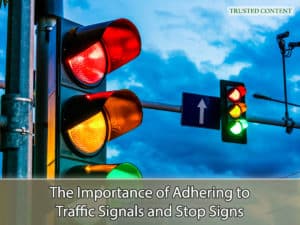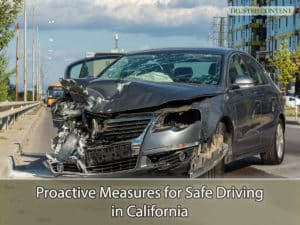In California, speeding is not just a minor infraction but a serious offense with substantial consequences. Under California Vehicle Code 22350, driving at a speed greater than is reasonable or prudent given the current conditions is illegal. Penalties for speeding include hefty fines, points on your driving record, and in severe cases, can escalate to reckless driving charges. The fines can range depending on the speed over the limit, with additional costs for court fees.
Risks of Speeding and Accident Statistics
Excessive speed dramatically increases the risk of accidents and fatalities. According to the California Highway Patrol's Statewide Integrated Traffic Records System (SWITRS), a significant percentage of traffic fatalities and injuries are attributed to speeding. High speeds reduce reaction time, increase stopping distance, and in an accident, higher speeds often result in more severe injuries or fatalities.
The Hazards of Tailgating on California Roads
Understanding Safe Following Distances
California law mandates a “reasonable and prudent” following distance, as outlined in California Vehicle Code 21703. Tailgating, or following too closely, reduces the time available to react to sudden stops or changes in traffic, increasing the likelihood of rear-end collisions. The recommended following distance is at least a three-second gap between vehicles, which should be increased in poor weather conditions or heavy traffic.
Liability in Rear-End Collisions
In rear-end collisions in California, the tailgating driver is often found at fault due to the presumption that they did not maintain a safe following distance. This can lead to liability for damages and injuries sustained in the accident. It's crucial for drivers to be aware of their following distance at all times to avoid legal repercussions and ensure road safety.

The Importance of Adhering to Traffic Signals and Stop Signs
The Importance of Adhering to Traffic Signals and Stop Signs
Legal Requirements at Stops
California's Vehicle Code 22450 states that drivers must come to a complete stop at stop signs and red traffic lights. Rolling stops, or failing to come to a full stop, are considered violations and can lead to traffic citations. At four-way stops, drivers must adhere to right-of-way rules, allowing the vehicle that arrived first to proceed.
Collision Risks at Intersections
Intersections are common sites for traffic accidents, often due to drivers failing to observe stop signs and traffic lights. The California Department of Transportation reports that a significant number of intersection accidents occur due to drivers making improper stops or ignoring traffic signals. These accidents can result in severe injuries, especially when high speeds or heavy vehicles are involved.
Liability and Legal Implications in California Traffic Accidents
Determining Fault and Negligence
In California, traffic accident liability is primarily determined by the concept of negligence. A driver is considered negligent if they fail to act with the level of care that a reasonably prudent person would under similar circumstances. This includes violations of traffic laws, such as speeding or tailgating. In an accident, the negligent party is typically held liable for damages.
Understanding Comparative Fault
California follows a “pure comparative negligence” system, as per California Civil Code 1714. This means that in an accident, each party's financial responsibility is proportional to their degree of fault. Even if a victim is partially at fault, they can still recover damages, though their compensation will be reduced by their percentage of fault.

Proactive Measures for Safe Driving in California
Proactive Measures for Safe Driving in California
Essential Safe Driving Practices
Safe driving in California involves more than just obeying traffic laws. It includes being attentive, avoiding distractions, and being aware of other drivers' behaviors. Regular vehicle maintenance, such as checking brakes and tires, also plays a crucial role in preventing accidents. Drivers should be particularly cautious in high-risk areas like intersections and school zones.
Adapting to Road Conditions
California's diverse weather conditions require drivers to adapt their driving habits accordingly. In adverse weather conditions like fog, rain, or heavy traffic, slowing down and increasing following distances can prevent accidents. Being aware of road conditions and adjusting driving behavior is essential for safety on California roads.
Guidance for Handling Traffic Accidents in California
Immediate Steps Following an Accident
If involved in a traffic accident in California, it's important to prioritize safety first. Move to a safe area if possible, check for injuries, and call emergency services. Exchange information with the other party, including driver's license, insurance details, and contact information. Document the scene with photos and gather witness statements if available.
Seeking Legal Assistance
After a traffic accident, consulting with a legal professional can be crucial. An attorney can help navigate the complexities of California's traffic laws, determine liability, and assist in filing insurance claims or lawsuits if necessary. Legal guidance is invaluable in ensuring that your rights are protected and that you receive fair compensation for any damages or injuries.
How to Protect Yourself from Common Traffic Risks in California
How to Protect Yourself from Common Traffic Risks in California
Traffic safety is a shared responsibility, and understanding California's traffic laws is key to protecting yourself and others on the road. If you find yourself in need of legal assistance following a traffic accident, Napolin Accident Injury Lawyer is here to support you. With our extensive litigation experience, we are dedicated to representing injury victims and upholding their rights. For a free consultation, call us at (866)-NAPOLIN. Let us help you navigate the legal complexities and secure the justice and compensation you deserve.
- Understanding Uber Accidents and Insurance Coverage Periods in California - April 8, 2025
- A Guide on Red Light Auto Accidents in California - August 14, 2024
- Self-Representing in a California Personal Injury Claim - August 13, 2024
